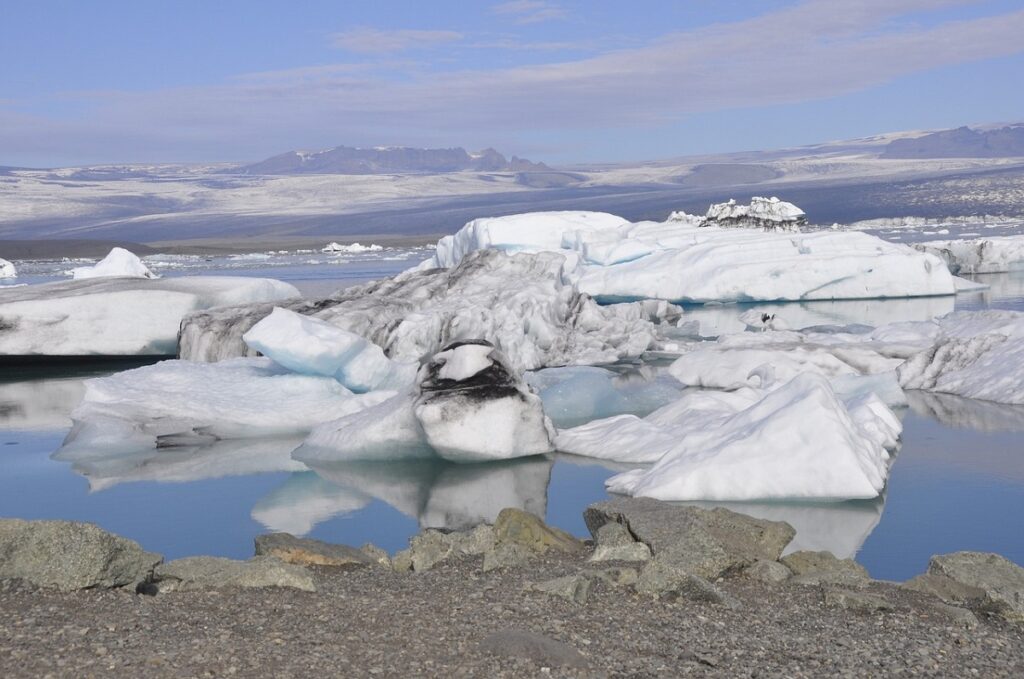Study the past, if you would define the future, Confucius once said.
Staying true to this maxim, researchers delving deeper into the secrets of our planet’s past are helping us understand the nature of our existence and gain knowledge to solve future challenges. The latest revelation takes us back 2 million years ago, in the Late Pliocene and Early Pleistocene epochs, but it could indicate modern gene editing solutions to address today’s climate change.
A team of scientists has discovered a DNA sample retrieved from Kap København in the far north of Greenland that dates back to a period when global temperatures were 11–19 °C warmer than today, and the arctic landscape featured lush plant life and a range of animals.
According to a new study published in Nature, sequencing the DNA sample revealed a whole lost world in what is now a mostly frozen region. DNA of mastodons, and the ancestors of today’s geese, reindeer, and rodents, were discovered.
The mastodon DNA is said to be the oldest one of this kind ever discovered, and it was extracted from clay and quartz sediments preserved in Greenland’s permafrost.
“A new chapter spanning one million extra years of history has finally been opened, and for the first time, we can look directly at the DNA of a past ecosystem that far back in time,” one of the researchers, Eske Willerslev from the University of Cambridge, said in a press release.
Mapping a whole new world
This extraordinary discovery is a product of years of research and constant technological advancement. Traditionally, geneticists and paleontologists have been using fossil fragments, such as pieces of bone, to look at the past.
However, due to the rareness of such samples, the scope of the research has always had very limited results. Willerslev used a new technique that allows more thorough findings by focusing on exploring environmental DNA or eDNA.
“Every single cell in the body contains DNA. A ground sloth or an elephant, they are shedding DNA all the time in their surroundings” Willerslev said in a video interview for Nature.
According to Nature’s study, DNA as we know it degrades with time due to certain “microbial enzymatic activity, mechanical shearing and spontaneous chemical reactions such as hydrolysis and oxidation.”
The oldest DNA obtained from fossil remains (a mammoth molar) dates back to 1.2-1.1 million years ago if geological methods are used and 1.7 million years ago if molecular clock dating is used.
“To investigate whether the minerals found in Kap København Formation could have retained DNA during the deposition and preserved it, we determined the mineralogic composition of the sediments using X-ray diffraction and measured their adsorption capacities,” the study says.
The findings show that some minerals are better at preserving the eDNA due to their mineral composition, so the extraction process can yield better results.
The study confirms the presence of DNA from mammals and geese, but also shows the existence of an open boreal forest system that combines species such as poplar, birch, and thuja trees, as well as various different arctic shrubs that have not been discovered before.
All this data maps a whole new world, of which we were previously unaware, and paints a much clearer picture of the ecosystem’s extreme climate change during past epochs.
The findings, according to researchers, could aid in predicting the long-term environmental cost of current global warming, and become a guiding light in the future endeavors of finding sustainable solutions to climate change in general.
A new era in DNA detection
A completely new era in DNA detection has begun as a result of the discoveries from the Kap København Formation.
The process of mapping the environmental DNA from the Kap København revealed a broad range of microorganisms, such as various fungi and bacteria. This groundbreaking revelation could possibly open the door for discovering new approaches to making some of today’s endangered species more resistant to the warming climate.
Professor Kurt H Kjaer, a geology expert who is also part of the discovery team said “It is possible that genetic engineering could mimic the strategy developed by plants and trees two million years ago to survive in a climate characterized by rising temperatures and prevent the extinction of some species, plants and trees. This is one of the reasons this scientific advance is so significant because it could reveal how to attempt to counteract the devastating impact of global warming.”
Genetic engineering, particularly through gene editing, is already playing an essential role in improving the quality of certain crops and can propel fast growth and higher yield.
Using the results of the 2-million-year-old environmental DNA from plants could possibly give us some new approaches to preventing the extinction of species due to global climate change.




